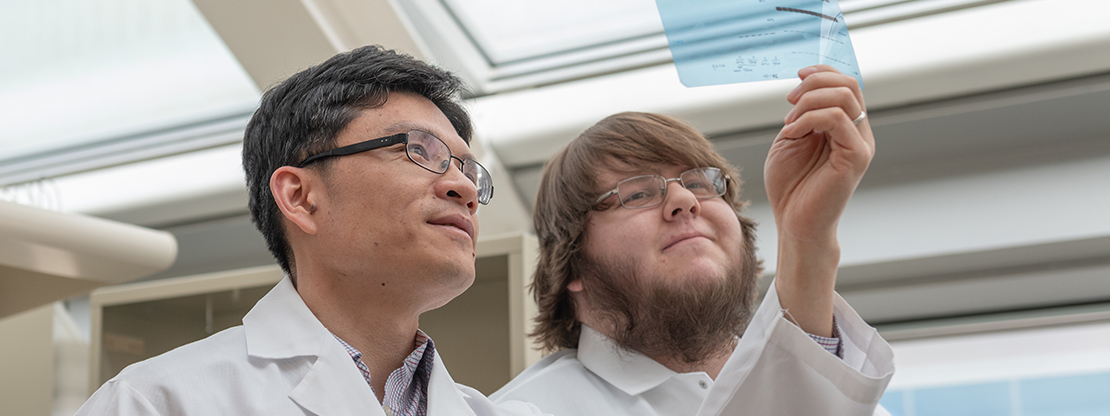Van Andel Institute Graduate School takes innovative approach to biomedical graduate training
December 13, 2019

When Dr. Steven J. Triezenberg was recruited to lead Van Andel Institute Graduate School in 2006, he faced an interesting question: how do you build a degree program offered at countless institutions of learning, but make it stand apart from the rest?
It was a challenge that Triezenberg, faculty and staff met head-on by conceiving an adaptive, innovative, research-intensive curriculum built on the Graduate School’s mission to create not just the next generation of scientists, but the biomedical research leaders of the future.
Standing apart from the rest
The Graduate School offers a five-year Ph.D. in molecular and cellular biology. Universities that offer similar degrees have traditionally administered lecture-based courses geared toward giving students broad knowledge of the entire scope of molecular and cellular biology.
The relationship with Institute scientists and laboratories keeps the Graduate School at the forefront of creating a learning environment that cultivates scientific leaders. The Institute uses a problem-based curriculum which helps ensure the Graduate School can adapt its educational offerings around the latest scientific discoveries and breakthroughs.
Rather than lecturing students on information across multiple disciplines, the Graduate School leverages its place in a biomedical research institute to develop life-long learning skills both in the classroom and the laboratory.
“Scientists learn by seeing an interesting problem that nobody has solved yet, and then we read the literature surrounding that problem. We talk with colleagues about the best approach to the problem and then write a proposal saying ‘Here’s how I want to attack that problem and why it matters,’” Triezenberg said. “Then we hope that people are convinced enough to want to fund it. That’s how scientists learn. We built a curriculum that replicates that process.
This is accomplished through a rigorous curriculum that, in the students’ first year, equates to roughly half of their time spent in the classroom and the other half in the laboratory. That ratio shifts in later years to be 80–90 percent laboratory time, and 10–20 percent classroom time.
“What matters more than gathering knowledge about topics of current interest is building the skills to learn what you will need in the future,” Triezenberg said. “Our curriculum inherently stays in touch with where science is, because the problems keep moving as the science keeps moving.”
In the later years of the degree program, the Graduate School’s curriculum incorporates professional development training with the aim of preparing students to become future scientific leaders. This includes anything from learning how to oversee and conduct experiments to learning how to apply for grants or other research funding.
Working with world-class talent
Because the Graduate School is housed in a research institute, students work alongside some of the brightest minds from around the world who are working to multiply the impact of scientific discovery. This access puts students right in the thick of important discoveries happening in laboratories throughout the Institute. For example, graduate students were authors or co-authors on more than 20 research papers at the Institute in 2018.
“The opportunity to work with scientists in a direct mentoring relationship is a real draw, and gives students a supporting role in both raising the prestige and furthering the mission of the Institute,” Triezenberg said.
To learn more, visit vaigs.vai.org.